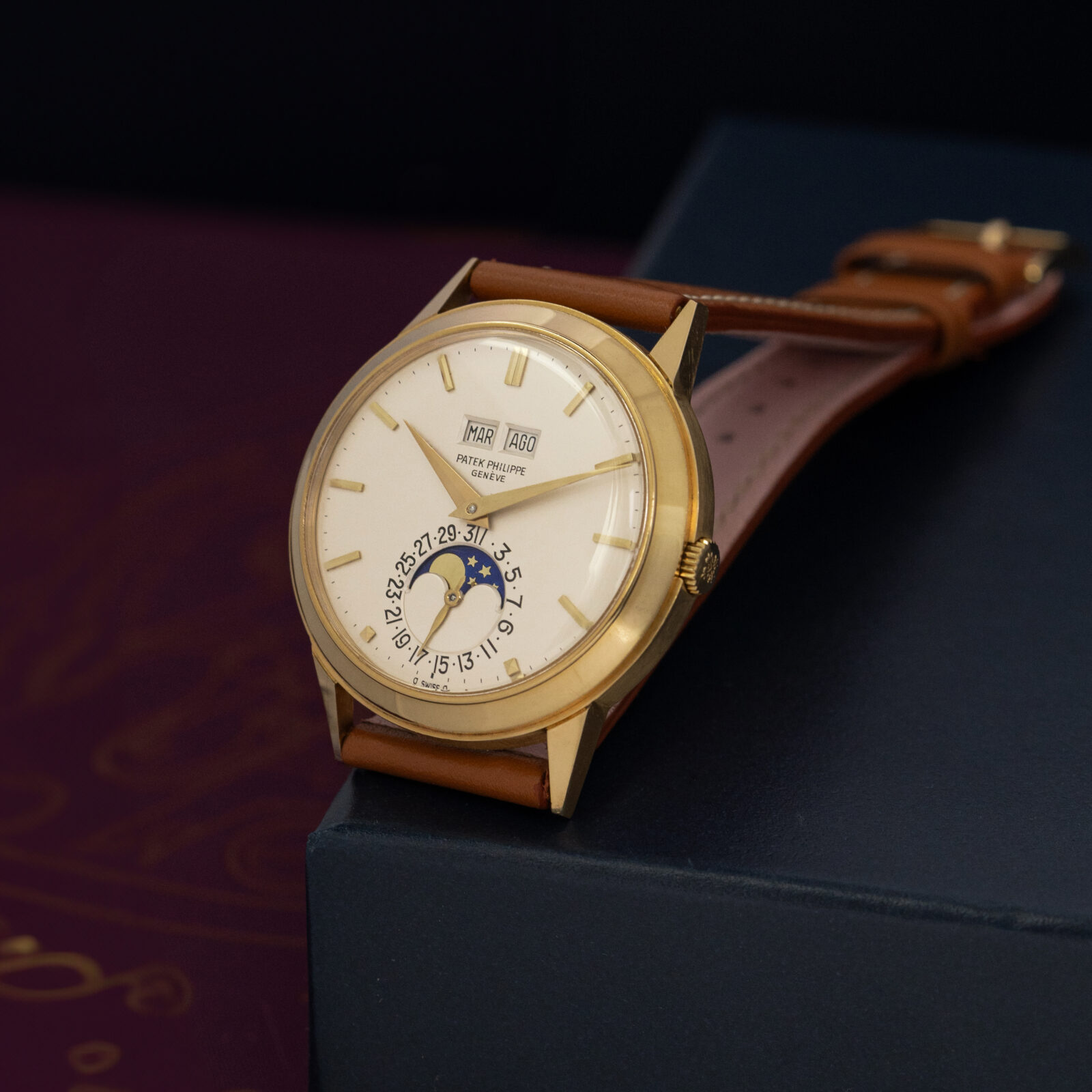

3448
The honor of creating the first -serially produced- perpetual calendar wristwatch with automatic movement, goes to Patek Philippe; and boy did they premier a world-class specimen.
Indeed, by above mentioned statement you probably understand that the importance of this reference simply can't be overlooked. But let us dissect it, for you to consume its significance in a more comprehensible manner. Starting with the mechanics: the movement and by extension its noteworthy complication.
Although not being the first to launch a perpetual calendar movement, the company certainly was an early adapter of this complication; with such wristwatches already being launched a century ago. Close to 40 years later, Patek Philippe debuted their first automatic movement with this function under cal. 27-460. No expense was spared for this project, the refined finishing and pleasing decoration of the solid gold rotor attesting this. If you look at the movement, it is easy to conclude Patek was aware how important this development would be to them.
The 3448 was created to house this novelty, as it followed up on the scarcely produced 3449; which incorporated a manually wound perpetual calendar caliber. It turned out to be a cornerstone of the maisons QP line, as they crafted over 500 pieces. The lion share of which in yellow gold, yet a multitude of changes were ushered in during the two decade spawning production period.
For instance, the case has two series. The one we have dates from 1973 and falls in the "first series" category; with thinner bezel and the lugs attached directly to the body. On the inside of the caseback you'll find a number 4 in the "Key of Geneva", referring to casemaker Antoine Gerlach. this three-piece case was considered to be unusually large, coming in at 37.5mm, and therefore it is often referred to as "Padellone" by Italian collectors. (translates to "large frying pan"). The lugs claim a saillant role in the design, making it look futuristic together with the integrated crown. We are happy to judge the case condition as very good, with all lines strongly present and hallmarks visible, enhancing the beloved geometric configuration.
The forward-looking theme continues in the dial design, that too comes in different series. The month and day aperture are hand-carved and display discs in Spanish language. Position above the brandname, which is in raised enamel lettering. At the 6 o'clock position one finds the moonphase and pointer date. The sober and balanced dial lay-out emphasises the modern and minimalistic feel. It is paramount to have the original dial and not being refinished or replaced.
This sculpture of a timepiece was enjoyed by the likes of Andy Warhol, Ringo Star and many other prominent figures in their respective fields. Still today it is regarded as an exemplary work of craftsmanship and horological ingenuity. This watch was retailed by Beyer and comes with their report confirming the sale in the early 70's, along with the extract of the archives by Patek Philippe. Furthermore it is supplied with the original 18K yellow gold buckle.













